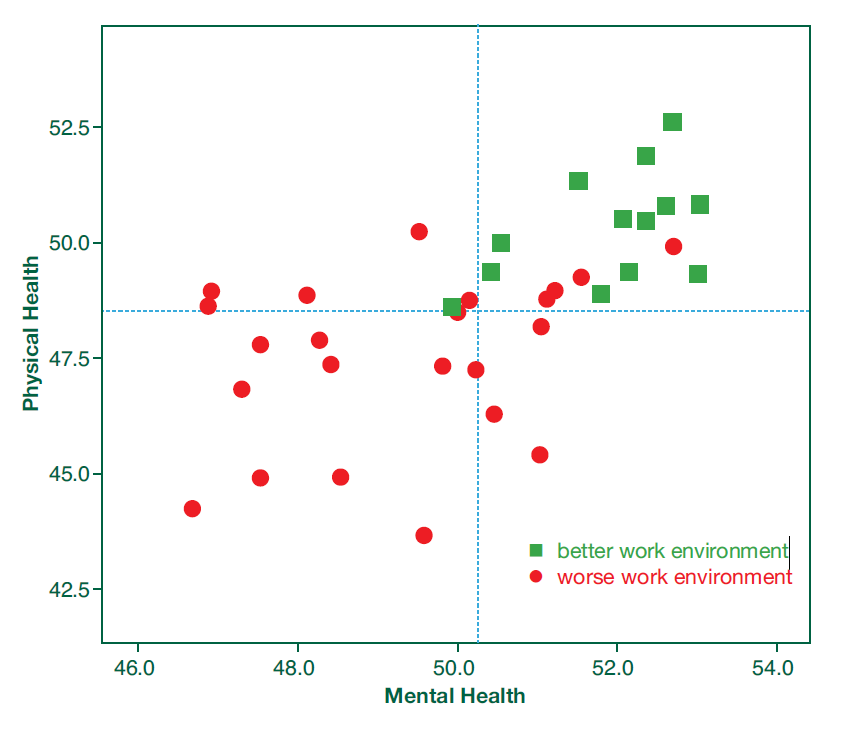Improving Workforce Health & Well-being
With long-term data from the TMS platform, TREC measures staff job satisfaction, work engagement, empowerment, burnout, physical and mental health, tasks left undone or rushed for lack of time, and use of best practices in healthcare. By monitoring over time how these and other indicators change, we develop a picture of the health and well-being of the long-term care workforce.
TREC Data Driving Changes in Staff Recognition
The Saul & Claribel Simkin Centre in Winnipeg, Manitoba, has been a TREC nursing home from the beginning in 2007. “There was so little research in long-term care so to be part of something of the magnitude of TREC was exciting,” says director of care Alanna Kull. TREC’s focus on care aides was equally motivating—most long-term care research focused on nurses, families or residents.
Data from those first TREC surveys flagged the high level of burnout reported by care aides and led Kull and her team at the Simkin Centre to drill down in their own satisfaction surveys to see what they could change. They polled staff about how they would like the Simkin Centre to celebrate anniversaries, milestones and accomplishments, then incorporated staff feedback and suggestions. Beyond offering staff members a pin and serving cake at celebration events, staff now receive gift cards and snacks distributed randomly to care units throughout the year. Celebration events are much better attended and staff report higher levels of satisfaction with their workplace.
Impact
The Who is looking after mom and dad? paper that profiled care aides in prairie nursing homes generated significant media coverage. Articles appeared in five daily newspapers across Canada and TREC scientific director Carole Estabrooks was interviewed on CBC Radio’s The Current.
Impact
Care aides report high levels of emotional exhaustion and cynicism in our TREC data, which worsens over time. This often leads to burnout, with significant impact on staff turnover and retention, and poorer care for residents. TREC researchers are exploring factors in these high levels of exhaustion and cynicism and whether the factors are modifiable. This could support healthier front line staff and improve quality of care, while saving costs from reduced staff turnover.
Findings
TREC data show that both physical and mental health of care aides in nursing homes are worse than the general population.1 However, the health of care aides working in nursing homes with more positive work environments is notably better.

Care aides are under considerable stress yet remain highly committed to their work. Care aides in 2014 reported even higher levels of cynicism than in 2010.
- Influence of organizational context on nursing home staff burnout: A cross-sectional survey of care aides in Western Canada (2017). International Journal of Nursing Studies. Chamberlain SA, Gruneir A, Hoben M et al.
TREC published the first profile of Canada’s front line long-term care workforce, captured in the paper Who is looking after mom and dad? Unregulated workers in Canadian nursing homes. More than 60% of the 1,381 care aides in Saskatchewan, Manitoba and Alberta who took part in the TREC survey were born outside Canada. Just under 50% spoke a first language other than English. Most were middle-aged and older women, with high school diplomas. More than 83% had care aide certificate level education. A 2014 follow-up study showed an increase to more than 60% of staff whose first language is not English (4,057 care aides interviewed).
- Who is looking after mom and dad? Unregulated workers in Canadian nursing homes (2015). Canadian Journal on Aging. Estabrooks CA, Squire, JE, Carleton HL et al.
Page Options


